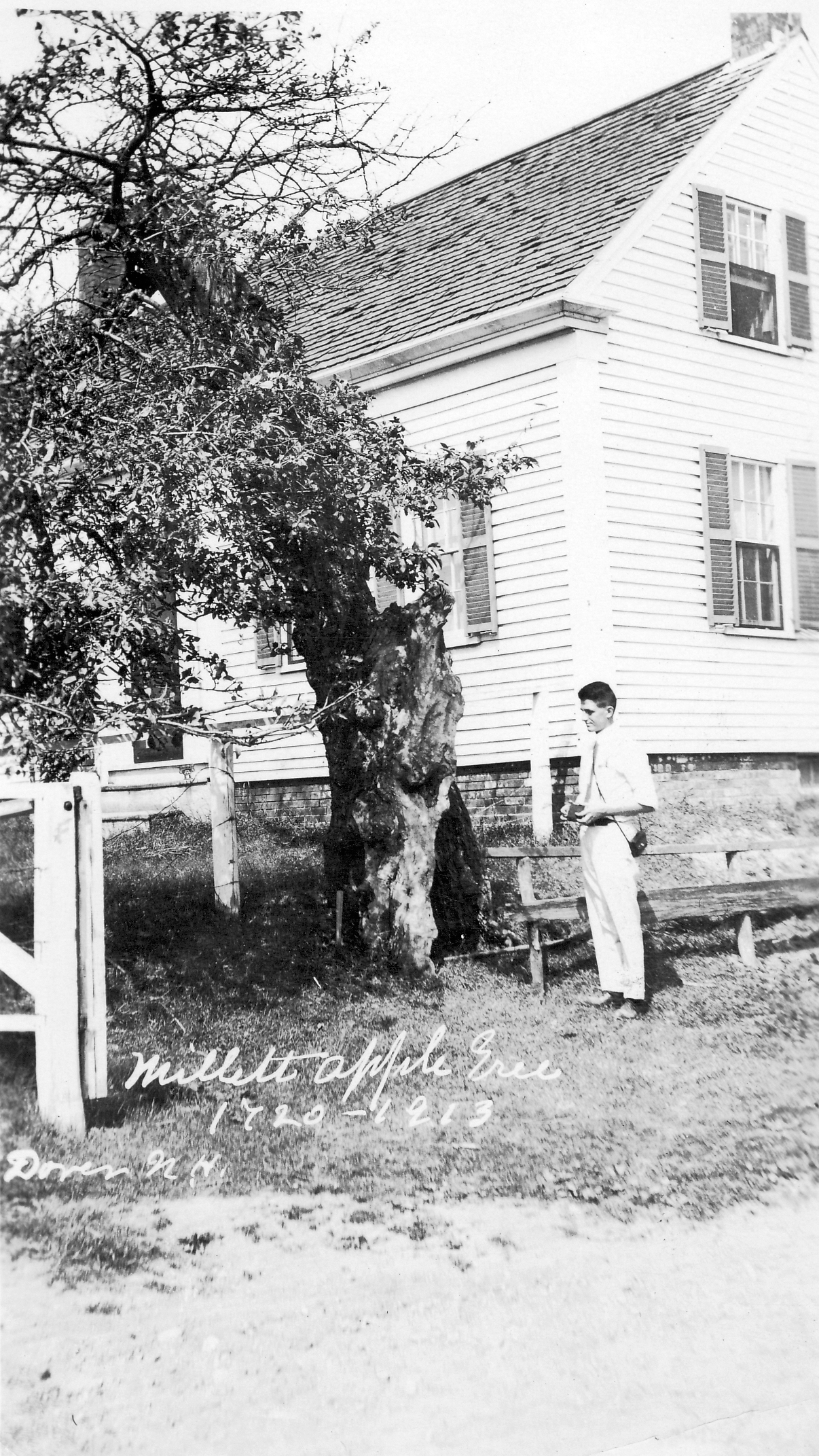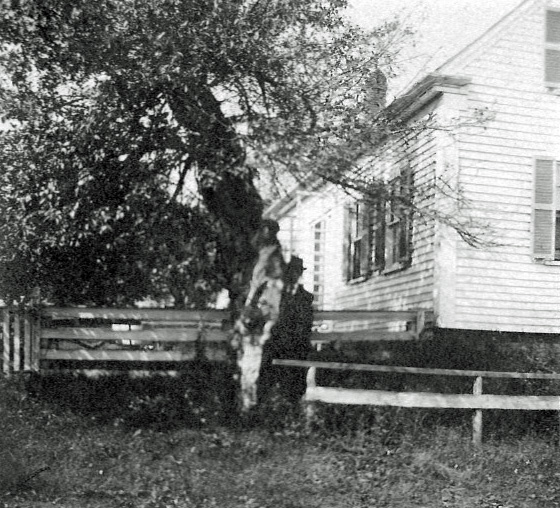Disclaimer
The Dover Public Library website offers public access to a wide range of information, including historical materials that are products of their particular times, and may contain values, language or stereotypes that would now be deemed insensitive, inappropriate or factually inaccurate. However, these records reflect the shared attitudes and values of the community from which they were collected and thus constitute an important social record.
The materials contained in the collection do not represent the opinions of the City of Dover, or the Dover Public Library.
Millet Apple Tree
 The Millet apple tree dates from 1720; it bore apples until the year 1913, when it died; its last crop was in 1912; it blossomed in 1913, but the brown tail moths ate every blossom and leaf and the tree died, aged 195 years; its trunk was standing until 1918 when it was cut down; but for the brown tail moths it undoubtedly would have lived to complete two centuries of life.
The Millet apple tree dates from 1720; it bore apples until the year 1913, when it died; its last crop was in 1912; it blossomed in 1913, but the brown tail moths ate every blossom and leaf and the tree died, aged 195 years; its trunk was standing until 1918 when it was cut down; but for the brown tail moths it undoubtedly would have lived to complete two centuries of life.
According to the undeviating tradition in the Millet family, and in the families living in the immediate vicinity, the tree was brought from England in a tub, when but a small shrub; a white rose bush also came in the same tub; the tub was used as a wash tub for many years. Thomas Millett was a young sea captain of Gloucester, Mass., and brought it home in his ship on a return voyage from England, in 1720. Very soon he planted the shrub where the old stump now stands, at the southwest corner of the house that the late Calvin Coleman lived in for more than eighty years, and ate fruit from it nearly every year, as the tree was a thrifty bearer. The Coleman house is not the house in which Capt. Millet lived, which was further back from the road.
The trunk of the tree was about four feet in diameter; it was about eight feet from the fround to where the branches came out, and of uniform size. It was hollow in 1915, one-third of the shell being rotted way, so there was room for two persons to stand inside the shell, which was sound and ten inches thick. In its prime the tree had wide spreading branches, and a lofty top, magnificent in proportions. Some years it had been known to bear forty and fifty bushels of apples a year; even in its old age it blossomed and bore fruit nearly every year, down to its death in 1913.
Mr. Howard Millet Roberts, a great grandson of Captain Millet, cut twigs from the old tree and grafted them into a thrifty young tree, in the orchard near his house. The grafted tree bears a large crop of fruit every year. The apples have a mild and delicious flavor, and are of large size.
The large branches of the original tree fell off one by one, from year to year; but smaller branches grew out and took their places and bore fruit; in that was the tree reproduced itself so long a time. The tree stood on the east side of the State road, a short distance below Riverview Hall.
From “History of Dover, New Hampshire. vol. 1. : Containing historical, genealogical and industrial data of its early settlers, their struggles and triumphs” by John Scales, c. 1923.
This historical essay is provided free to all readers as an educational service. It may not be reproduced on any website, list, bulletin board, or in print without the permission of the Dover Public Library. Links to the Dover Public Library homepage or a specific article's URL are permissible.

